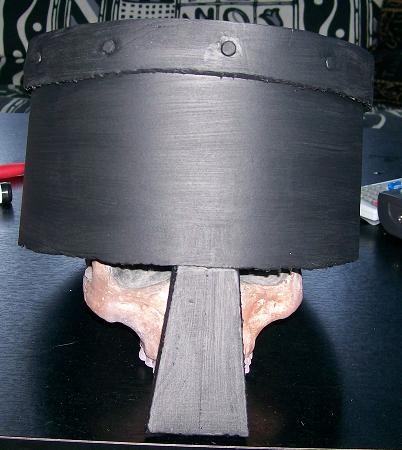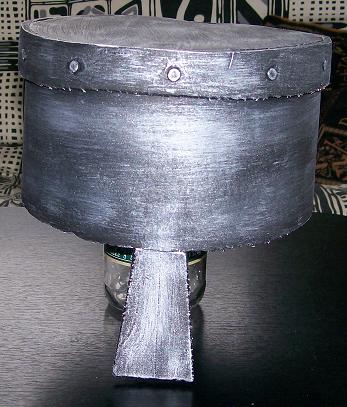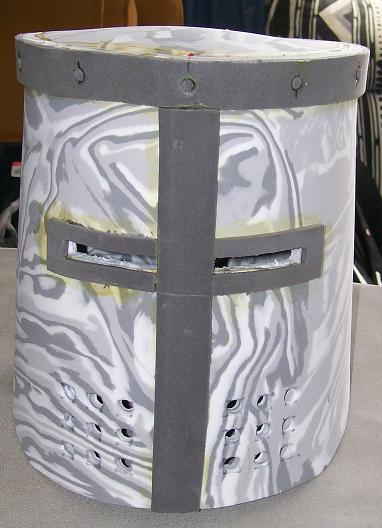I’d recommend using grey or black foam for making armour. Almost inevitably whatever coating you use will deteriorate, and you’ll see the foam colour coming through - which is not nice if it’s green, blue or yellow. Also, it’s nice if you can leave the inside unpainted, so that colour doesn’t rub off on your head, and that works best if the inside is already grey.
I found that gluing thin pieces of foam to the helm to give detail makes it a lot more believable-looking. For example, the rim at the top of the model you’re working from, and the studs, could be done in foam.
I’ve used black paint as an undercoat, then dry-brushed in silver. The undercoat doesn’t have to be spray paint, regular paint with a brush works just as well and spray-paint is relatively wasteful and messy. This one is just black paint with silver dry-brush: picasaweb.google.com/eagle14/StW … 1640796674
You could latex it, and it may give a smoother and more durable finish, but it isn’t absolutely necessary. Another alternative is to spray it with car underbody sealer for the undercoat, which gives a finish resembling latex. I’ve seen this done well (and it’s apparently what they did for armour on Hercules and Xena), but I haven’t had much luck with it and found that the coating tended to colour things it touched. I found just using paint much less hassle than sealer or latex.
Spangenhelms are relatively easy to make, using four curved triangular pieces of foam for the main shape (which is exactly how it was made in metal). I think Derek posted a pattern for one somewhere on the forum. Foam is easy stuff to work with, 3D curves are quite achievable with good templates. Also, mild heating of the foam allows for pretty much any shape to be made by pressing it against a former, although I haven’t needed to use that technique yet.





